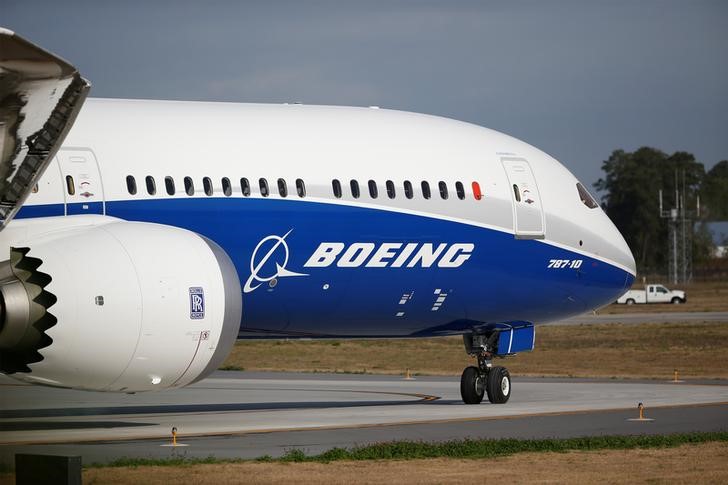Joey Roulette
WASHINGTON (Reuters) – Problems with Boeing’s (NYSE:) Starliner capsule still docked at the International Space Station (ISS) have upended initial plans to return two astronauts to Earth as last-minute fixes and tests were made to chart a mission that has critical to the future of Boeing’s space division.
NASA has delayed the planned return three times and now has no date set. Since liftoff on June 5, the capsule has suffered five helium leaks, five maneuvering engines failed and a fuel valve that did not close completely, prompting the crew in space and mission managers in Houston to spend more time than expected correcting errors mid-mission.
Here’s an explanation of the potential path forward for Starliner and its veteran NASA astronauts Barry “Butch” Wilmore and Sunita “Suni” Williams.
CURRENT SITUATION
According to comments from NASA Commercial Crew Manager Steve Stich, Starliner can remain docked to the ISS for up to 45 days. But in an emergency, such as if new problems arise that mission officials can’t fix in time, it can remain docked for up to 72 days, relying on various backup systems, according to a person familiar with mission planning.
Inside NASA, Starliner’s latest scheduled return date is July 6, according to a source who requested anonymity. Such a return date would mean that a mission originally planned for eight days would instead last a month.
Starliner’s disposable propulsion system is part of the ship’s “service module.” Current challenges center around this system, which is needed to get the capsule away from the ISS and ready for it to enter Earth’s atmosphere. Many Starliner engines have overheated on startup, Stich said, and leaks of the helium used to pressurize the engines appear to be related to how often they are used.
Stich said recent test firings of the engines while Starliner remains docked have given mission teams confidence in a safe return, although tests and checks continue. The mission management team, made up of NASA and Boeing employees, is reviewing data on propulsion problems, running simulations in Houston and considering ways to fix them, such as by updating software or changing the way the equipment is used.
Once NASA officials give the team the go-ahead to return, Starliner’s engines will be used to undock the capsule from the ISS and begin the roughly six-hour journey home, gradually narrowing its orbit before plunging into Earth’s atmosphere for landing. by parachute and airbag at one of several potential locations in the southwestern United States.
This is Starliner’s first mission into orbit with astronauts, the final test required before NASA can certify it as the US space agency’s second trip to the ISS. It will join SpaceX’s Crew Dragon project, which has dominated the public and nascent private markets for human spaceflight amid years of Starliner launch delays.
IF THE UNEXPECTED HAPPENED
NASA has stated that even despite problems with the propulsion system, Starliner will still be able to return astronauts to Earth in an emergency, that is, if the capsule needs to serve as an escape capsule from the ISS in an emergency or if any of the Starliner’s perishable items – e.g. , solar panels – have signs that their service life is ending earlier than planned.
Unlike the current Starliner mission, NASA has not set a planned return date for the first Crew Dragon mission with astronauts in 2020. This mission ultimately lasted 62 days because the astronauts needed to help maintain the ISS, as the space station was short-staffed at the time. .
IF STARLINER CANNOT BE USED
If Starliner is deemed unable to safely return Wilmore and Williams to Earth, one option would be to send them home aboard Crew Dragon, which ferried four astronauts to the station in March and can accommodate more people in an emergency.
This scenario, which is considered unlikely, would undoubtedly embarrass Boeing. But NASA and Boeing officials and engineers familiar with the program did not tell Reuters about Starliner’s ongoing problems, and there is nothing to indicate that it would be necessary.
In this case, Starliner’s fate will depend on various factors, including the extent of technical problems.
The last time a NASA astronaut needed an alternative trip home was in 2022, when the Russian Soyuz capsule leaked coolant after delivering two cosmonauts and American astronaut Frank Rubio to the station.
NASA considered Crew Dragon as an alternative way for Rubio to get home, but he ended up using an empty Soyuz capsule that Russia had launched as a rescue ship. Rubio’s mission was extended from six months to just over a year—371 days—a record length for an American in space.


